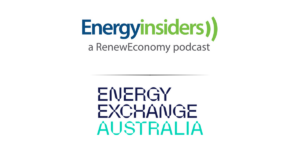Fortunately for the Federal Government, it can use a “Leaf” to hide its growing embarrassment at being exposed for suppressing its own report warning of sharp declines in global oil production in five years time.
In 2009, Transport Minister Anthony Albanese’s Bureau of Infrastructure, Transport and Regional Economics (BITRE) published Report 117, which revealed “at some point beyond 2017 we must begin to cope with the longer-term task of replacing oil as a source of energy. Given the inertias inherent in energy systems and vehicle fleets, the transition will be necessarily challenging to most economies aroundthe world”.
While the government has not been able to explain how Report 117 “vanished”, now that it has been rediscovered it’s safe to say that the conclusion was only half right.
Peak oil, that point at which the world’s accessible and commercially viable supplies of petroleum begin to disappear, is a certainty.
But Report 117’s assessment that economies suffer from inertia when transitioning energy systems is not, in 2012, completely accurate.
The assessment applies to Australia’s economy, yes, but not to others,thanks to the Leaf, the Nissan Leaf – an all-electric vehicle that is being mass produced for markets in Japan, the US, the UK and some European countries as you read this, with 500,000 units ready to burn rubber from the end of next year.
Report 117’s resurfacing in January could not be timelier for the Liberal Party, which has been wracked by indecision over whether to support or ditch the hundreds of millions of dollars in hand outs to the car industry.
Evidence that petrol supplies will be severely diminished in a few years time should make it easier for both the Opposition and the Labor Party to bite the bullet and withdraw subsidies for manufacturers of petrol-guzzling cars.
Makers of cars in Australia are demanding a taxpayer funded lifeline to keep producing the guzzlers just as the price of crude oil has for the first time in history averaged above $100 a barrel for the past 12 months, according to the US Department of Energy. Ten years ago it averaged less than $30 a barrel. http://www.eia.gov/todayinenergy/detail.cfm?id=4550
Further, Australian drivers are being asked to make their next vehicle investment a petrol fuelled one, just as the risks to world oil supplies have heightened, courtesy of rogue governments.
In Australia, taxpayer hand outs to foreign car makers should be tied to innovation and sustainability for a future that will be devoid of plentiful, cheap petrol.
Let’s offer incentives to manufacturers that build electric vehicles in Australia. For example:
#1 The Ford Falcon flagship sold less than 20,000 units last year, so a subsidised retooling of Ford’s production line for its all-electric Focus marque makes sense.
#2 General Motors is ploughing ahead with its Volt in the US, a range extending plug-in hybrid vehicle. Why don’t we help GM to do the same here?
#3 The Toyota Prius and the locally-made Camry plug-in hybrid are leaving their mark on Aussie bitumen, so why are we still incentivising the production of the six cylinder Aurion and other pure petrol driven cars at Altona?
#4 Nissan’s Leaf is the global leader in terms of critical mass and should also get an incentive to introduce this all electric, plug-in to Australia.
The average young family with two children uses its two cars extensively on school runs, shopping trips, sports events, visiting friends and relatives and so on.
But do these families need a car that travels more than 175 km each day? Presently, that is what Nissan’s Leaf offers on a single charge. The 2014 model will offer twice that distance, making the likelihood of running out of “fuel” a remote concept.
Motorists whose driving patterns are less predictable and need the back up of petrol just in case, could have the Toyota Prius plug-in as a second car. The first 30 km comes off the electricity grid. The GM Volt goes one better, offering the first 60km off the grid before switching seamlessly to the on board motor.
These cars would likely accommodate 80 per cent of an average driver’s travelling. In two to three years, car makers will have doubled the size of electric vehicles’ batteries, making these cars suitable for 90 per cent of motorists’ needs.
Renewable energy should be mandated for the refuelling (charging up) of electric vehicles with motorists who go down that road also required to install energy systems such as photovoltaic panels at their charge address.
This strategy would circumvent the need to rely on electricity from a source that produced carbon emissions, such as the coal and gas fired generators that create most of our power.
To put the mass installation of solar powered panels into context consider Germany’s achievement in December: 3000 megawatts of solar panels, 20 million of them, were installed on rooftops across Germany during its winter Christmas holidays.
In just four weeks, enough panels generating electricity from the sun were installed on German roofs to provide sufficient fuel for 2 million Nissan Leafs each and every year.
In four years, 21,000 megawatts of solar panels have been installed in cloudy, drizzly, cold Germany – that is more than enough to power all of Australia’s cars – that is enough to pull the plug on our oil imports.
The Germans and manufacturers of electric vehicles overseas are showing up our own nation’s naysayers.
Governments around the world have set targets for electric vehicles. By the end of the decade, Japan wants to see 34.5 million of them on the roads — half the nation’s car fleet – France wants 2 million, the US and Germany a million each, plus a million in Spain by 2014, and China 500,000 before the end of this year.
Now that is an embarrassment for Australia too big to disguise behind a fig leaf.








